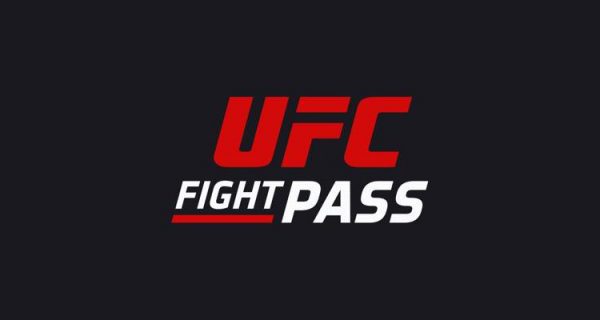MMA fans might not want to admit it, but a relationship between the sport and pro wrestling has always existed. Aside from crossover megastars like Brock Lesnar, the world of sports entertainment was even ahead of the curve when it came to streaming services.
While UFC Fight Pass technically launched first on December 28, 2013 — the WWE Network followed on February 12, 2014 — the WWE first announced its service, initially planned to be a pay-TV channel, in 2011. After initial growing pains, the service has proved to be a success for the pro-wrestling company, with 2.12 million subscribers as of April 2018.
The WWE does still have traditional pay-per-view as an option, but it also has all of its content (and the libraries of many former competitors, practically giving it the entire history of pro wrestling) for just $9.99 a month. As a result, the organization was dropped from a number of carriers.
With the success of the WWE Network, UFC Fight Pass and the likes of Netflix and Hulu, does MMA need pay-per-view as we know it anymore?
The answer would seem to be no, but more on that later. If you ask UFC President Dana White, the answer has been yes.
“Vince [McMahon, WWE Chairman and CEO] is a guy who is a trailblazer, look at the stuff he has done. Look at the stuff Vince has done throughout his career with WWE and how he took wrestling and where he brought it,” White said in 2014. “Who knows? Maybe that works for him, doesn’t make sense to me. Now you’re seeing a lot of the distributors are talking about dropping them now. DirecTV and others too.”
That was then. Both the WWE and UFC have since proven that the big money is in TV rights deals. While the UFC will go to ESPN and the ESPN+ streaming service next January thanks to a $1.5 billion deal, current network Fox Sports gets WWE’s Smackdown Live programming for $1 billion.
Fight Pass is offered at the monthly price of $9.99 per month or $8.99 (six months) and $7.99 (12 months), but the ESPN deal could pretty much make the service obsolete. Subscribers get:
- Future seasons of Dana White’s Tuesday Night Contender Series beginning in June 2019.
- A new all-access program.
- Pre- and post-event shows for all 30 non-pay-per-view events.
- Non-exclusive access to UFC’s full archive of programming, including previous events and original programming.
- UFC Countdown shows, press conferences, weigh-ins and pre- and post-shows.
If the “full UFC archive” means documentaries, collections, past TV shows and all other promotions featured on Fight Pass, then an ESPN+ membership gets a fan the same content at basically half price ($4.99 per month or $49 a year). Fight Pass still benefits international fans, since ESPN+ is only available in the United States at the moment.
Fans will be able to order pay-per-views and replays through ESPN+ and Fight Pass at a separate cost. This relates to the ultimate point: pay-per-view itself isn’t going anywhere, but the need for traditional providers is decreasing.
It seems like too much to expect the UFC to stop charging the usual $60 to $70 for a pay-per-view, but the company can still make that money by offering it in-house as it does now. Events can then be streamed on multiple devices and via television through a Roku, Google Chromecast, laptop or gaming and mobile devices.
To order a traditional pay-per-view, you obviously have to have a provider. DirecTV offers deals ranging from upwards of 155 channels for $40 per month to 330-plus channels for $115 per month. However, all packages are 24 months long and the price jumps up after the first 12 months. This also does not include taxes and fees. Customers who cancel early must cough up $20 per month for each month remaining on their contract.
Why would anyone pay that much when they can watch a library of past content and live TV through Hulu, which includes ESPN, for $7.99? The other option is also the $4.99 for ESPN+ while waiting for the ESPN network broadcasts to be added.
Smaller MMA and general combat-sports events can also be streamed thanks to the likes of Fite TV and the Fight Network, which is a traditional TV network in Canada and a streaming service elsewhere. The UFC’s chief competitor, Bellator MMA, has also signed a streaming deal with DAZN. So, why do we even need traditional providers?
According to the Video Advertising Bureau’s first quarter report for 2018, “there are now 14.1 million households who only receive content via over-the-top (OTT) streaming services.” That’s more than triple the number of households since 2013. Still, “74 percent have a traditional pay-TV service,” and there are “15 million households that rely on an antenna to receive free broadcast channels.”
The UFC and MMA need traditional providers to continue to reach a larger audience right now. This all just depends on how quickly the audience shifts away from one form of technology to another. For example, when did you last use a phonograph or floppy disk? One day, the cable box will likely land in this same category.
As far as any impact on advertising goes, the UFC can once again look to WWE, which has streaming-service ad deals with Mattel, Kmart, KFC and other companies.
Where’s the proof of the shift? The UFC will be putting on 42 events in 2019, only 12 of which are pay-per-views. That’s a little more than 28 percent, and providers will still seem like nearly useless middlemen.
As Bob Dylan sings, “The times, they are a-changin’.”

